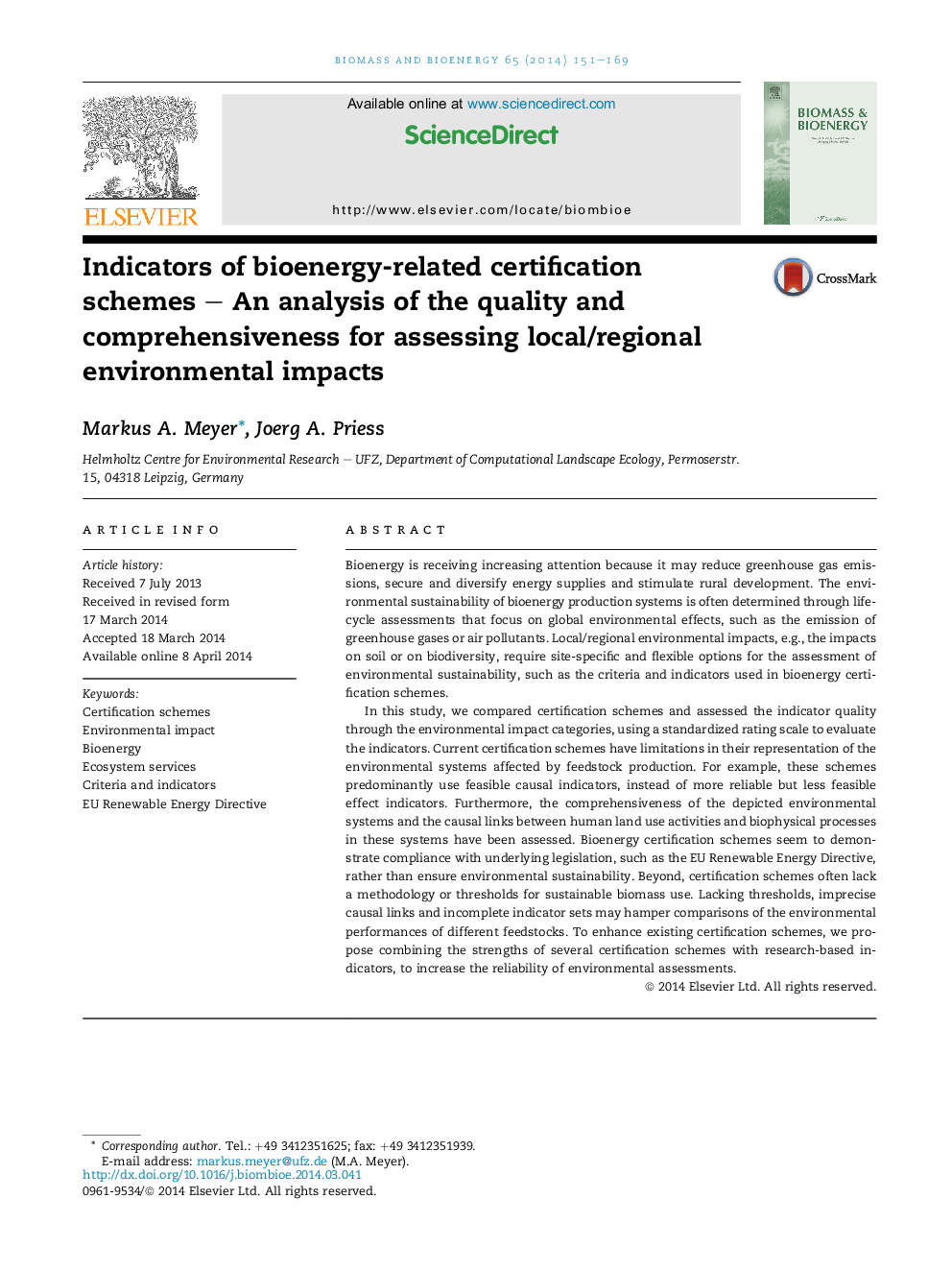| Article ID | Journal | Published Year | Pages | File Type |
|---|---|---|---|---|
| 7064877 | Biomass and Bioenergy | 2014 | 19 Pages |
Abstract
In this study, we compared certification schemes and assessed the indicator quality through the environmental impact categories, using a standardized rating scale to evaluate the indicators. Current certification schemes have limitations in their representation of the environmental systems affected by feedstock production. For example, these schemes predominantly use feasible causal indicators, instead of more reliable but less feasible effect indicators. Furthermore, the comprehensiveness of the depicted environmental systems and the causal links between human land use activities and biophysical processes in these systems have been assessed. Bioenergy certification schemes seem to demonstrate compliance with underlying legislation, such as the EU Renewable Energy Directive, rather than ensure environmental sustainability. Beyond, certification schemes often lack a methodology or thresholds for sustainable biomass use. Lacking thresholds, imprecise causal links and incomplete indicator sets may hamper comparisons of the environmental performances of different feedstocks. To enhance existing certification schemes, we propose combining the strengths of several certification schemes with research-based indicators, to increase the reliability of environmental assessments.
Keywords
Related Topics
Physical Sciences and Engineering
Chemical Engineering
Process Chemistry and Technology
Authors
Markus A. Meyer, Joerg A. Priess,
